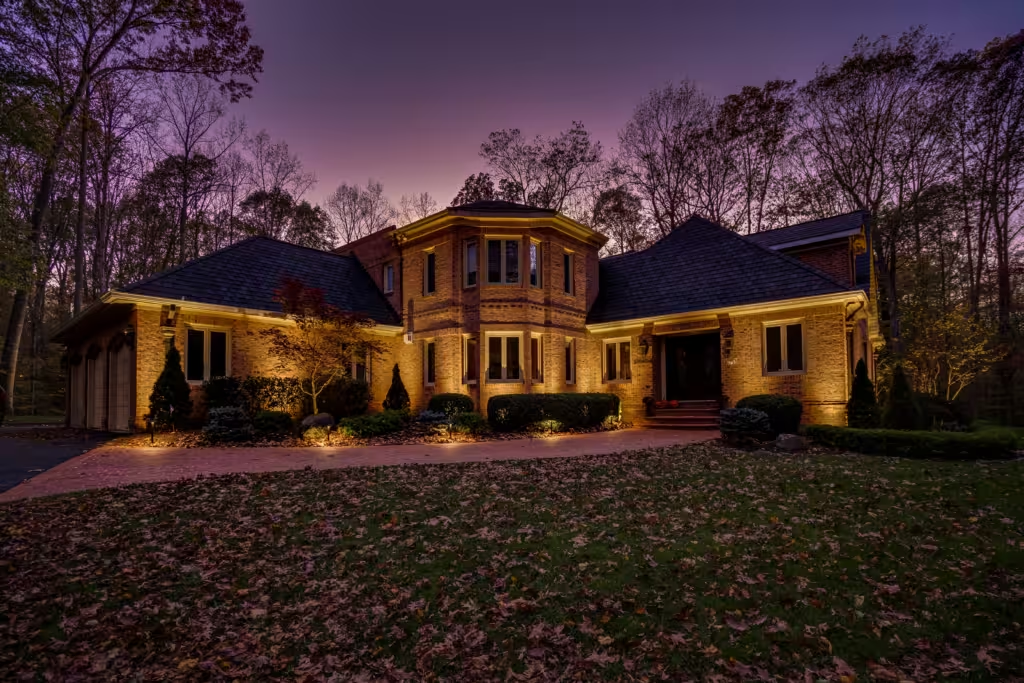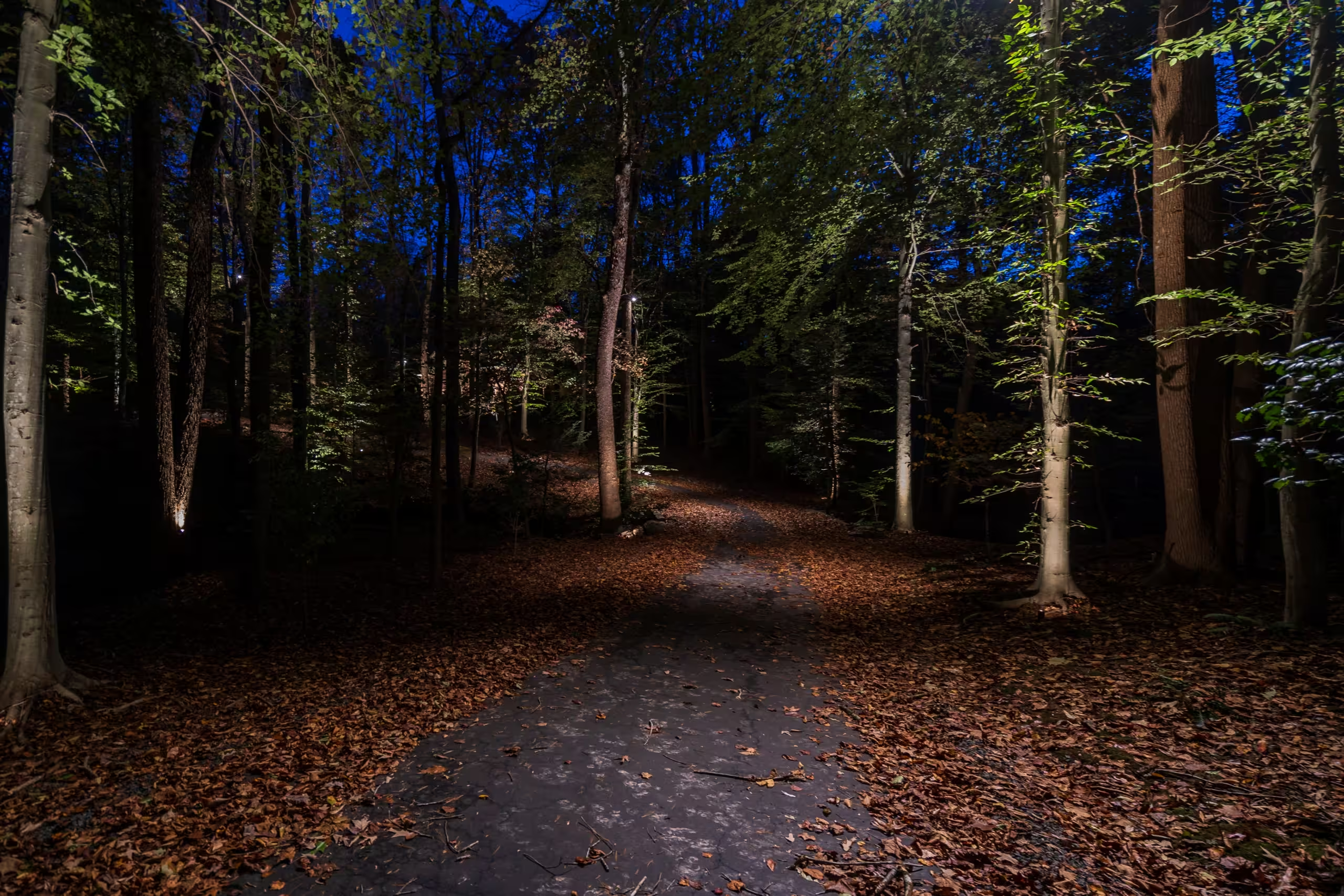When it comes to enhancing the aesthetic appeal and safety of outdoor spaces, landscape lighting plays a crucial role. Homeowners often notice that most landscape lighting systems are low voltage. This might spark the question: why low voltage? Let’s explore the reasons behind this choice and why it’s the preferred option for outdoor lighting.
1. Safety First
Low-voltage lighting typically operates at 12 volts, compared to the standard household voltage of 120 volts. This lower voltage significantly reduces the risk of electrical shock, making it a safer option for outdoor environments where moisture, rain, and other elements are constant factors. In particular, it’s ideal for family homes with children or pets, where safety is paramount.
2. Energy Efficiency
Low-voltage lighting systems consume less energy compared to high-voltage counterparts. This is especially important for landscape lighting, which often stays on for extended periods after dark. By using low-voltage fixtures, homeowners can illuminate their landscapes beautifully without the burden of high electricity bills. The incorporation of LED technology further amplifies energy savings, as LEDs are known for their minimal power consumption and long lifespan.
3. Less Disruptive Installation
One key advantage of low-voltage landscape lighting is its minimal installation impact. While 120-volt systems require trenches 12-18 inches deep, which often demand larger trenching machines and can damage tree roots or disturb landscaping, low-voltage systems only need to be buried about 6 inches. Because of the lower voltage and increased safety, this shallower depth allows for a more precise, less invasive installation, reducing the potential for harm to your yard and existing plants.

4. Design Flexibility
Low-voltage lighting allows for greater flexibility in design and placement. You can position fixtures in areas that may be challenging with high-voltage systems, such as near ponds, pathways, or garden beds. The lower voltage also reduces the amount of heat emitted by the lights, so they can be safely placed near delicate plants or along walkways without the risk of overheating.
5. Enhanced Aesthetic Control
With low-voltage lighting, it’s easier to achieve a soft, ambient glow that enhances the natural beauty of a landscape. High-voltage lights can sometimes be too harsh, overwhelming the environment with excessive brightness. Low-voltage fixtures, on the other hand, offer a more controlled and subtle illumination, perfect for highlighting specific landscape features like trees, sculptures, or architectural details.

6. Cost-Effective
Low-voltage landscape lighting systems are generally more cost-effective than their high-voltage counterparts. The initial investment in fixtures, transformers, and wiring tends to be lower, and ongoing maintenance costs are minimized due to the energy efficiency and long lifespan of the lighting components. For homeowners looking to beautify their yards without a large upfront investment, low-voltage lighting is the way to go.
7. Environmentally Friendly
Since low-voltage systems consume less electricity, they are more environmentally friendly than high-voltage options. Using energy-efficient LED lights further reduces the carbon footprint of your landscape lighting system. By opting for low-voltage lights, you’re contributing to energy conservation and reducing the environmental impact of your outdoor lighting setup.
Conclusion
Low-voltage landscape lighting is a popular choice for many reasons. It offers safety, energy efficiency, design flexibility, and aesthetic appeal, all while being cost-effective and eco-friendly. Whether you’re looking to highlight the best features of your garden or improve the security of your property, low-voltage lighting is a practical and stylish solution that will illuminate your outdoor spaces beautifully.

